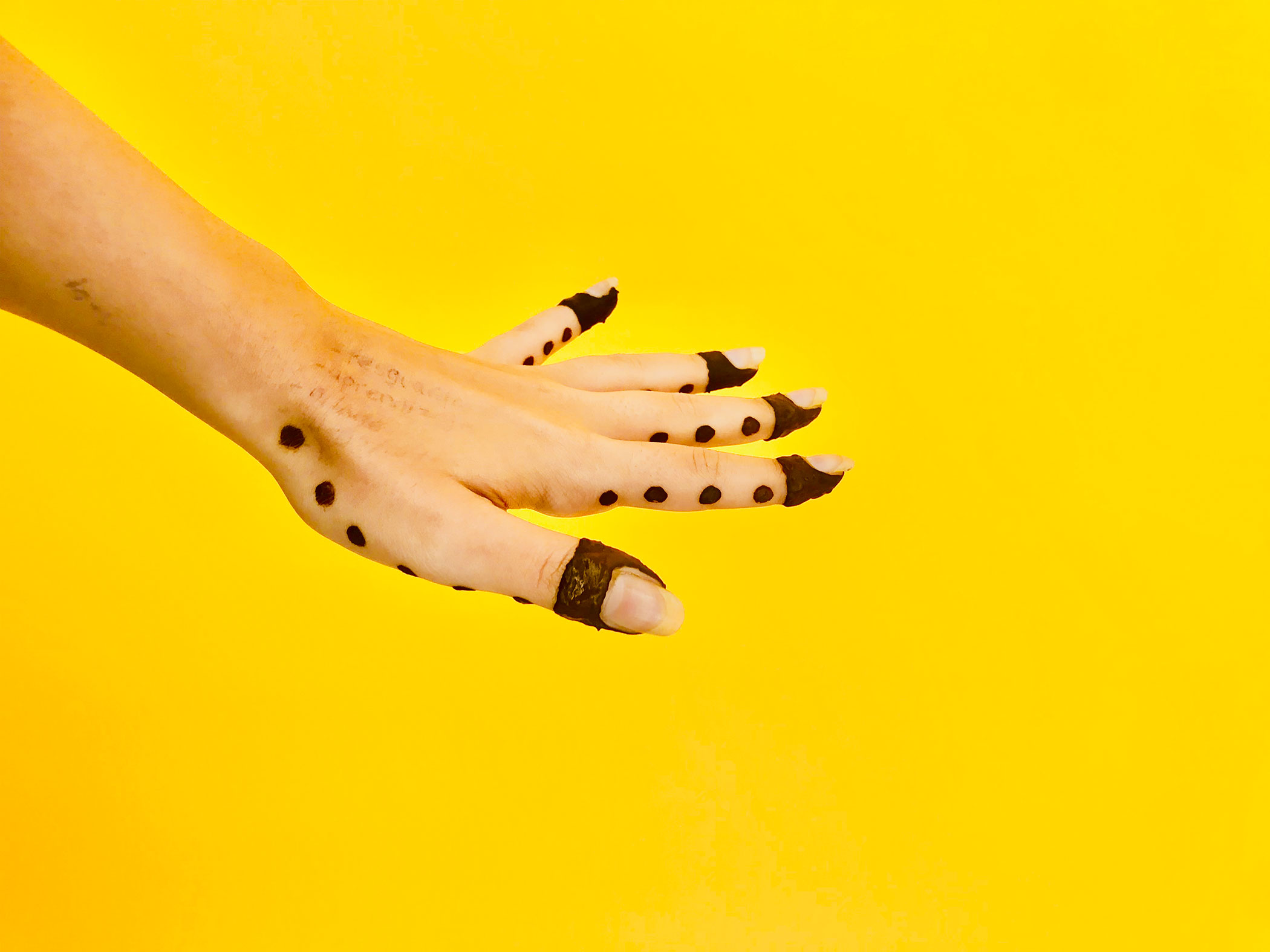
Henna pattern from Henna as a Traditional Art Form workshop, 2018.
Photo: Aisha Bin Suroor
search


Photo: Aisha Bin Suroor
In July 2018, the Sharjah Art Foundation Community Outreach Programme offered the workshop Henna as a Traditional Art Form. One of the foundation’s galleries was set up as a traditional henna salon, complete with themed carpets and a majlis floor seating.
The participants came to learn about Emirati henna traditions, experiment with their own contemporary designs and beat the summer heat. In addition to henna’s historical and aesthetic aspects, participants also learned about its health benefits and cooling effects.
Participants first watched a brief presentation and slideshow that showed examples of henna designs from different cultures around the world, including designs from India, Tunisia, Bahrain and the UAE. The group then moved to the workshop station to prepare their own henna paste using henna powder, hibiscus, powdered walnut shells, sugar, tea and a squeeze of lemon. Although there are numerous variations on the henna recipe, some that unfortunately contain harmful chemicals and dying agents, the instructor selected only the safest and most natural ingredients. After mixing everything together, the participants finally achieved the right consistency and then packed their henna paste to take home, where it would need to be kept in the refrigerator overnight before they could use it.
For the next step in the process, participants studied and combined elements from traditional floral designs, modern architecture, symbolism, abstract shapes and even maps to create henna designs. With the help of professional henna artists, who were invited to bring along their prepared henna, participants saw their designs coming to life on their own hands. Some were brave enough to try applying the henna to their friends’ or their own hands themselves, and some shared their methods for achieving a dark and long-lasting henna stain, including one popular method of rubbing vapour cream on the design after the paste has dried and peeled off.
At the end of the workshop, participants took their prepared henna home and shared it with their friends and family, and some took the time to conduct mini-photoshoots to capture all the stages in the process, from henna paste to design application to finished henna art. The workshop received great feedback from the community and social media audience in response to photos posted by participants and workshop organisers.